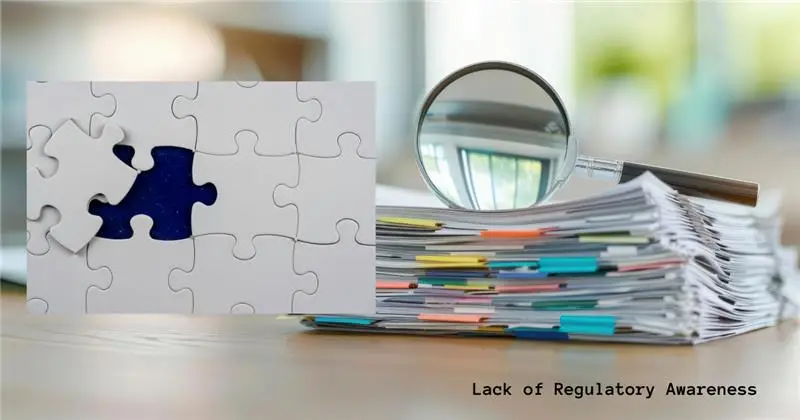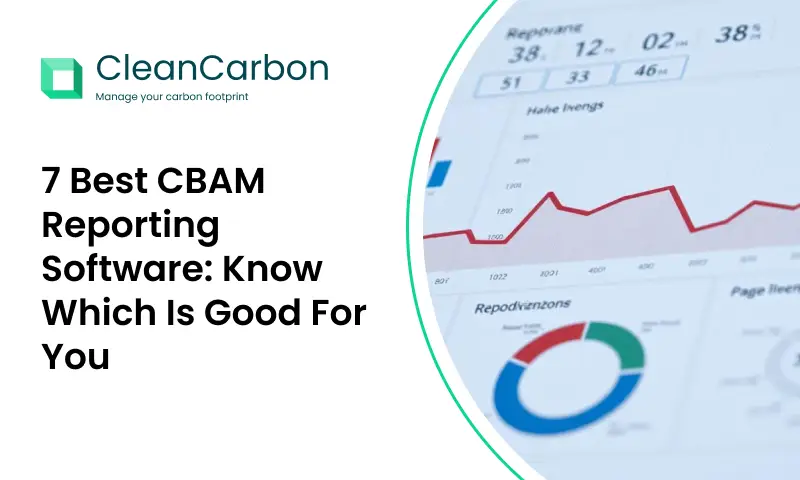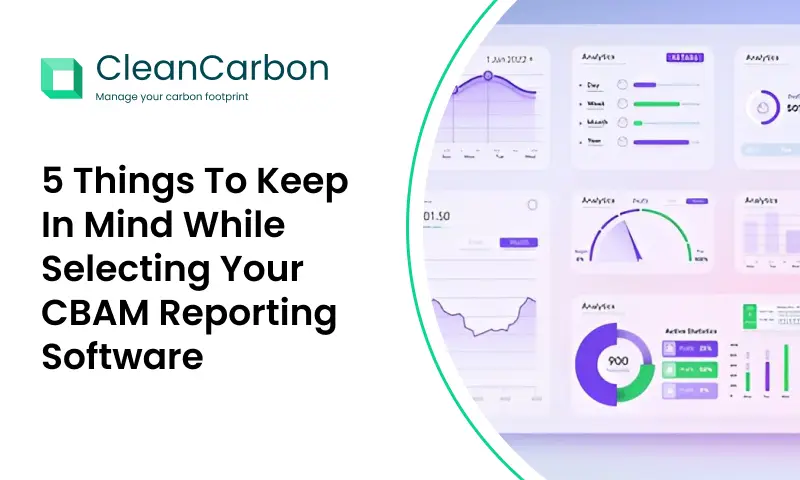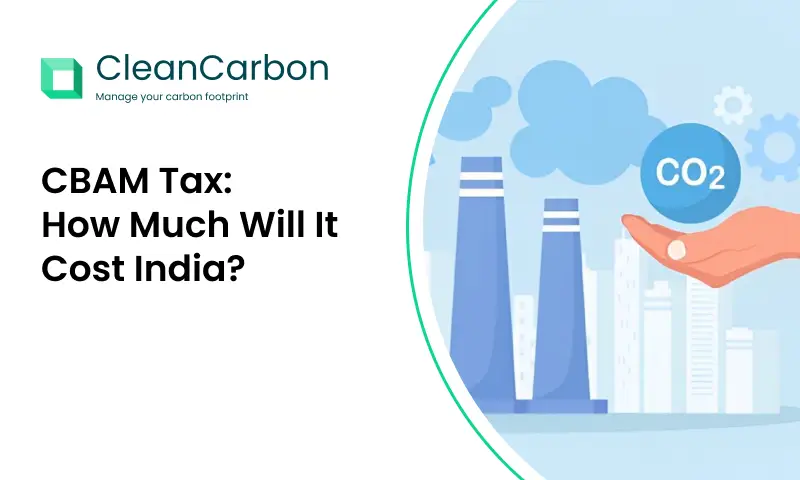The EU’s Carbon Border Adjustment Mechanism (CBAM) imposes carbon pricing on imports from countries with lenient climate policies, directly impacting Indian exporters in sectors like steel, cement, and aluminium. For Indian SMEs, CBAM brings complex challenges—ranging from limited emissions data tracking and lack of digital tools to verification hurdles and policy uncertainty. This blog outlines key CBAM reporting obstacles and offers proactive strategies to help Indian suppliers achieve compliance and stay competitive.
The European Union’s Carbon Border Adjustment Mechanism (CBAM) marks a significant milestone in climate-related trade regulation. Designed to prevent carbon leakage and promote fairer global climate practices, CBAM reporting challenges include imposing carbon pricing on imports of select goods from countries with less stringent climate policies. While this mechanism primarily aims to curb global emissions, it introduces new compliance burdens—especially for Indian suppliers across energy-intensive sectors like steel, cement, aluminum, and fertilisers.
India, as a major trading partner of the EU and a global manufacturing hub, is feeling the tremors of CBAM implementation. Indian suppliers, particularly small and medium enterprises (SMEs), face a host of challenges in adapting to this new trade-normal. From data accuracy and technological limitations to policy ambiguity and financial burdens, CBAM reporting compliance is anything but straightforward.
In this blog, we dive deep into the major CBAM reporting challenges for Indian suppliers and how they can proactively respond.
1. Lack of Regulatory Awareness and Clarity
One of the foundational challenges Indian suppliers face is the lack of detailed understanding of CBAM’s scope, definitions, and technical reporting requirements. Many suppliers remain unclear on key CBAM terms like embedded emissions, indirect emissions, and system boundaries. The transitional phase (Oct 2023–Dec 2025) provides some breathing room, but suppliers are often unaware of its implications or mistakenly assume it only requires minimal reporting. This regulatory knowledge gap is amplified by insufficient guidance tailored to India’s context, especially in regional languages or sector-specific terms. As a result, suppliers are often unsure whether they fall under CBAM’s scope or how deeply they need to modify existing processes.

2. Granular Emissions Data Collection
CBAM reporting demands precise, production-level emissions data—both direct and indirect. However, most Indian suppliers, especially MSMEs, lack systems that can track emissions at this level of granularity. Many rely on outdated or manual data collection methods, often focused on plant-level emissions, not production-specific outputs. Supply chain fragmentation makes it harder to trace emissions across processes such as raw material sourcing, fuel usage, and manufacturing steps. The use of default values will be heavily restricted after the transitional phase, requiring primary emissions data from January 2026 onwards. Hence, without standardized monitoring, Indian suppliers struggle to collect, verify, and compile emissions data in a format that aligns with EU expectations.
3. Absence of Digital MRV Infrastructu
CBAM requires robust MRV (Monitoring, Reporting, and Verification) systems that are digitised and auditable. Most Indian manufacturers lack carbon accounting software that can automate emissions tracking and support shipment-wise traceability. There’s minimal investment in green technology and IoT-enabled emissions tracking, especially among tier-2 and tier-3 suppliers. Digitisation is essential to generate auditable, shipment-specific CBAM reports—something Indian exporters are not yet fully equipped for.
4. Shortage of EU-Accredited Verifiers
Under CBAM rules, reported emissions data must be independently verified by EU-accredited third-party auditors. There are currently very few, if any, EU-recognized verifiers operating within India. Even domestic third-party certifiers lack experience with CBAM methodologies and verification requirements. This scarcity could lead to bottlenecks closer to 2026, when definitive regime compliance becomes mandatory. Without accessible and cost-effective verification partners, suppliers risk non-compliance, penalties, or delays in export clearances.
5. Financial Burden of Compliance
CBAM reporting isn’t just a procedural requirement—it comes with costs. Indian suppliers may incur 20–25% higher costs due to CBAM-related carbon pricing, depending on their carbon intensity. Costs also include investments in digital tools, training, third-party audits, and carbon consultants. Small manufacturers and MSMEs, already stretched thin by inflation and global trade shifts, are ill-prepared to absorb these additional costs. The financial burden is particularly heavy for the secondary steel sector, which relies on carbon-intensive technologies like DRI-EAF and induction furnaces. However, a platform with robust track-record and unmatchable experience in CBAM reporting can eliminate all the financial challenges arising from CBAM. Clean carbon is one such platform that removes most of these challenges at one place.
6. Shipment-Wise Emissions Attribution
One of CBAM’s core features is shipment-level emissions declaration. This means Indian exporters must include:
- Product-specific embedded emissions
- Invoice-linked emissions data
- Details of energy sources used during manufacturing
For many suppliers, this represents a significant operational overhaul. They must transition from monthly or annual averages to real-time, batch-level data capture—something they have never done before. These mean massive changes in the business operations and many times, changes in the revenue models too.
7. Supplier-Vendor Alignment and Coordination
CBAM compliance doesn’t begin and end at the exporting firm. It requires close coordination with upstream vendors and raw material suppliers. Indian suppliers must gather primary emissions data from their vendors. Vendor resistance, data secrecy, or lack of environmental reporting capabilities create blind spots. Without consistent and verified emissions data across the value chain, final CBAM reports risk being rejected by EU importers. Unless there’s better collaboration across the supplier ecosystem, full compliance will remain elusive.
8. Policy and Trade Uncertainty
CBAM is not just a reporting mechanism—it’s a geopolitical and economic policy instrument. Indian exporters fear retaliatory trade measures, EU market access restrictions, or additional tariffs. Uncertainty over bilateral trade negotiations between India and the EU further complicates long-term planning. Domestic climate policies such as India’s Green Steel Taxonomy also create overlapping compliance expectations, increasing regulatory fatigue. This policy uncertainty makes it difficult for Indian exporters to forecast export volumes, pricing, and investment timelines with confidence.
9. Lack of Training and Capacity Building
Even where intent exists, capacity is often missing. There’s a major shortfall of trained sustainability professionals, CBAM auditors, and technical staff in Indian SMEs. Existing training modules don’t focus on sector-specific GHG accounting or EU-oriented trade compliance. Government and industry bodies are still catching up on capacity-building programs and tools. To scale CBAM readiness, India needs massive investment in training, awareness, and institutional support.
10. Risk of Market Loss due to CBAM Reporting Challenges
Perhaps the biggest challenge is existential: suppliers that fail to comply may lose access to the EU market entirely. European buyers are increasingly seeking CBAM-ready suppliers to de-risk their own operations. Non-compliant Indian firms may lose contracts, be subject to customs delays, or face reputational harm. CBAM-readiness is becoming a new metric in supplier assessments for global companies. To stay competitive, Indian suppliers must not only adapt—but lead—in climate-aligned trade practices.
Conclusion: Turning CBAM Reporting Challenges into Opportunities
CBAM compliance is complex, but it also presents an inflection point for Indian suppliers. It’s a chance to introduce some significant changes and reforms. These include digitising and modernising manufacturing processes, embracing clean technologies like green hydrogen and electric furnaces, enhancing traceability and transparency in supply chains and improving long-term competitiveness in carbon-conscious markets. With the right strategy, support, and tools, CBAM can catalyze India’s transition to sustainable trade. But the window to act is narrow. Indian suppliers must treat CBAM not just as a threat—but as a business transformation imperative.
So far, Clean Carbon has helped 500+ exporters meet CBAM requirements using an easy-to-integrate digital platform. From emissions tracking to automated quarterly submissions and verifier partnerships—our tool makes CBAM compliance faster, cheaper, and audit-ready.






